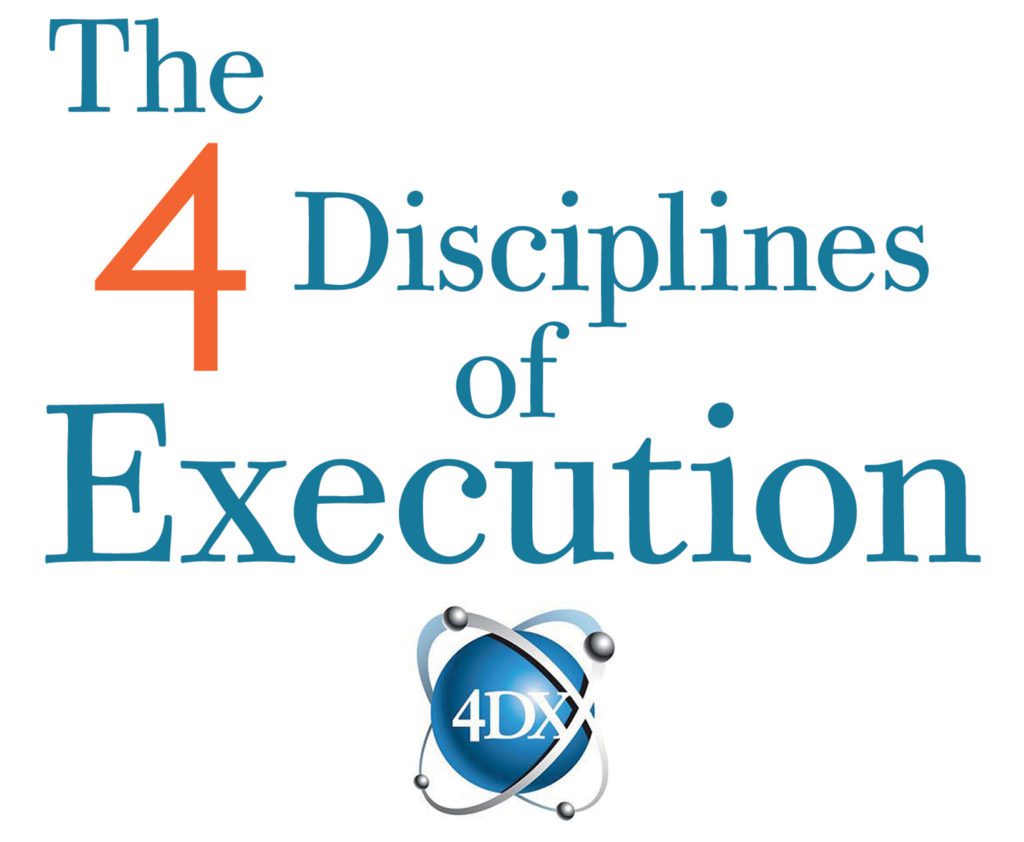
Anyone who works in Church leadership can imagine what we mean when we say that much of work energy is devoted to “the whirlwind.” Emails, meetings, bible studies, setting chairs up, it is no surprise to anyone in ministry that most of a church leader’s time falls victim to the tyranny of Sunday. It comes every single week, no matter what else you have going on, and it has to happen.
In the book “The 4 Disciplines of Execution,” authors McChesney, Covey, and Huling spell out a system to find a break from the whirlwind and make progress on the things you wish you were spending your time on, as a leader, as a team, and as an organization. This system, 4DX, has some merit for those in Church leadership and missional innovation.
4DX’s disciplines – focus, leverage, engagement, and accountability – help establish a system by which a leader can:
- Help clarify their “Wildly Important Goals” (WIGs)
- Identify what steps need to be taken at what pace to reach them (lead measures)
- Track progress towards those goals (scoreboard)
- Ensure accountability, all in the effort to break out of the whirlwind and get where you want to go.
A lot of this sounds like pretty standard business-speak (and it is), but there is also wisdom to be gained – if we can look past how many times this book says phrases like “maximize efficiency” or “streamline processes.”
Here are some ways to implement the 4 disciplines in a faith-based setting:
1. Get Specific
In all four steps of the process, but particularly the WIGs, the authors of 4DX advocate for specificity. Many of us have worked for or with churches, non-profits, or other faith-based organizations with mission statements and goals like “make disciples of Jesus and transform our community” or “create places of meaning and belonging for those in recovery.” I once worked for an organization whose mission statement at one point was “seek justice.” All of these goals are beautiful and worthy, and God-given.
They also don’t lend themselves to a natural checklist of next steps. How could we take our God-breathed vision of what we are to create in the world and distill a Wildly Important but specific and manageable goal? A goal that gave us something to do that suggested our specific work in creating that vision could be?
It’s easy to get caught in the whirlwind without specificity of what we are trying to accomplish. If you’re working at a church and your goal is to “make disciples of Jesus and transform the community,” then hosting events for the Dementia advocacy group is in line with your goals, and taking a couple of hours out of work to serve on the board for a river clean up is in line with your goals, and leading four bible studies a week is in line with your goals, and… None of those things are bad, but at the end of a week, what have you accomplished? What forward progress can you chart?
If your goal was to reach 250 people who had never heard the Gospel before, what would you have the freedom to say no to? Where could you focus your time? In the same vein, if your goal was to get 75 people engaged in a bible study class that led them to deeper faith, what would you make space to try?
The issue isn’t whether your goal, your God-given calling is worthwhile. The problem is trusting that call enough to say no to things that other people are called to, and being faithful to your call by answering it with specificity, and trusting that God has a plan for all the other things as well.
2. Get Humble
4DX suggests that once you have your specific WIGs in place, you spend a lot of time figuring out your “lead measures.” Lead measures are trackable data about your work that predictably lead to the desired outcome and which you are in control of, crucially.
So sales, attendance, ad registrations? These are all essential outcomes, but none are lead measures because they rely on other people’s choices. Lead measures are things like the number of follow-up calls made, trainings completed, or chairs stacked. They are specific, completely controllable, and (seeing as they are measures) measurable. These can be difficult to pin down in the church world because there are many reasons why someone may or may not respond to work that they are not comfortable doing. Still, they are likely examples as listed above: follow-up calls made and emails sent, volunteers trained and encouraged, resources gathered and prepared.
The core struggle here of any church leader is humility. Identifying these lead measures also means determining what our lead measures aren’t and noticing how much of our success and failure we don’t have control over. How many people show up on Sunday, number of baptisms or professions of faith, engagements in studies, attendance at free workshops or seminars, participation in programs you poured your heart and soul into? None of those things are under your control.
Movement of the Spirit, conviction of the heart, calling, none of those things are under our control. The best we can do is follow the Call we have received and trust that small and faithful work is enough. We can tend the garden, but only God can make the plants grow. We should tend it faithfully, remove weeds where we can, make sure the soil is suitable, but all with the knowledge that whether anything grows or not, we did what we were called to, and we could not do anymore.
3. Get Real
Most everyone who works at churches, particularly in pastoral leadership, is very nice. Part of the core competency of the job is empathy and emotional intelligence, the willingness to set aside your pain, stress, or convenience in the service of the care of others. And that is good. Pastors should be kind, compassionate, and willing to operate in the space of forgiveness and grace when others are angry. This is what it means to imitate Christ.
But even Jesus called people out when he needed to. The underside of this penchant towards kindness is often a lack of accountability. In church and non-profit worlds, the relationship with accountability can be complicated. These places can’t always look at a sales chart or follow a standard operating procedure to help people understand where they need to improve, tighten up their act, or have hard conversations. They are places that privilege gray areas, humanity, and grace, which is good. Until it’s not.
During an exit interview with a former staff member, who had more than ten years of experience with me, and whose opinion I deeply valued, I asked him what he thought our most significant threat to our organization was. As a person who had worked for well-respected and successful organizations all over the country, I was eager to hear what he thought we could improve. His answer? “You let too much go that you shouldn’t.”
Our greatest threat might be that in trying to be nice, we fail to be honest. We fail to acknowledge what isn’t working because we are afraid of hurting feelings. This fear makes sense if we orient our sense of worth around individual programs and offerings, but what if our WIGs and lead measures could give our teams and volunteers a sense of purpose that is greater than their individual efforts, and if that sense could ballast them against feelings that arise when it becomes apparent something isn’t working? We could respect our coworkers by inviting them into being part of the most valuable work we do, believing they could make a difference, not humor them by allowing them to continue running unsuccessful programs that we don’t care about.
These questions of how to lead well, plan well, achieve goals are ones of organizational excellence, but they are also ones of faith. These questions have as much to do with how we imagine our role as participants in God’s recreation of the world as they do with keeping our boards and donors happy.
4DX promotes itself as a productivity strategy, a way to make your organization do more. But when it comes to questions of faith-based organizations, it’s just as much a system to help your organization do less. By identifying what your organization’s goals, strategies, and shortcomings are, it allows you to see all how your God-breathed calling is truly still God’s work. Take some time, consider all the things that your organization can do, and consider all that it can’t. Remember who makes the plants grow, even as we ever more faithfully learn to tend our garden.
Steps to Try:
- Talk to your team and identify ONE WIG for this upcoming year. Remember that it needs to be specific and measurable.
- Talk to your team and identify two or three “lead measures” or steps you control that could predictably lead to progress toward your WIG (this will be harder than coming up with a WIG).
- Spend some time in one-on-one conversations with people around your organization who you trust and ask them what you think your organization needs to be more honest about. These preliminary conversations could give you insight into gaps you are currently unaware of and lead to powerful change.




0 Comments